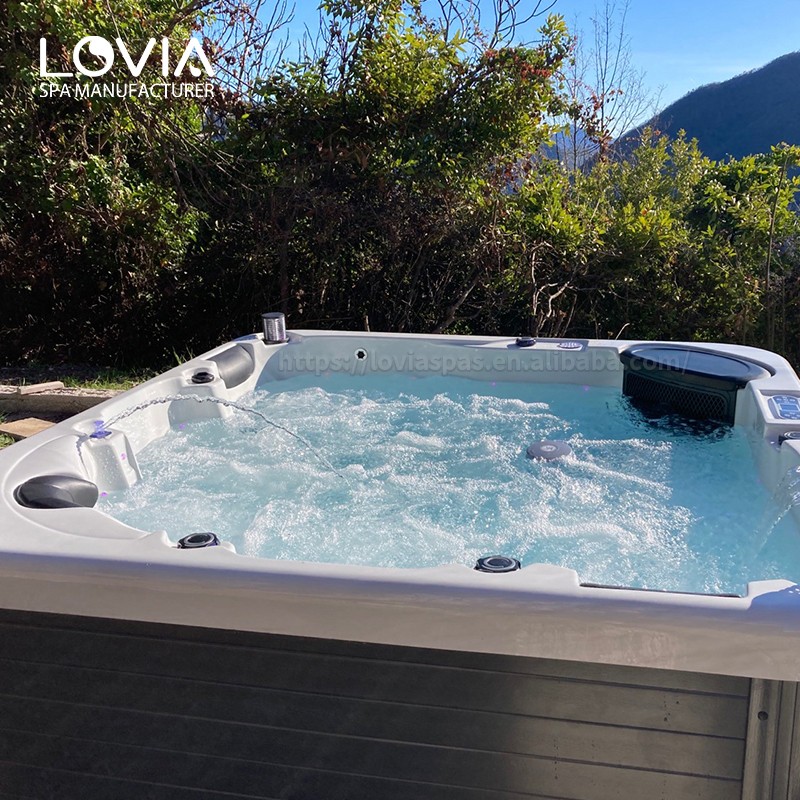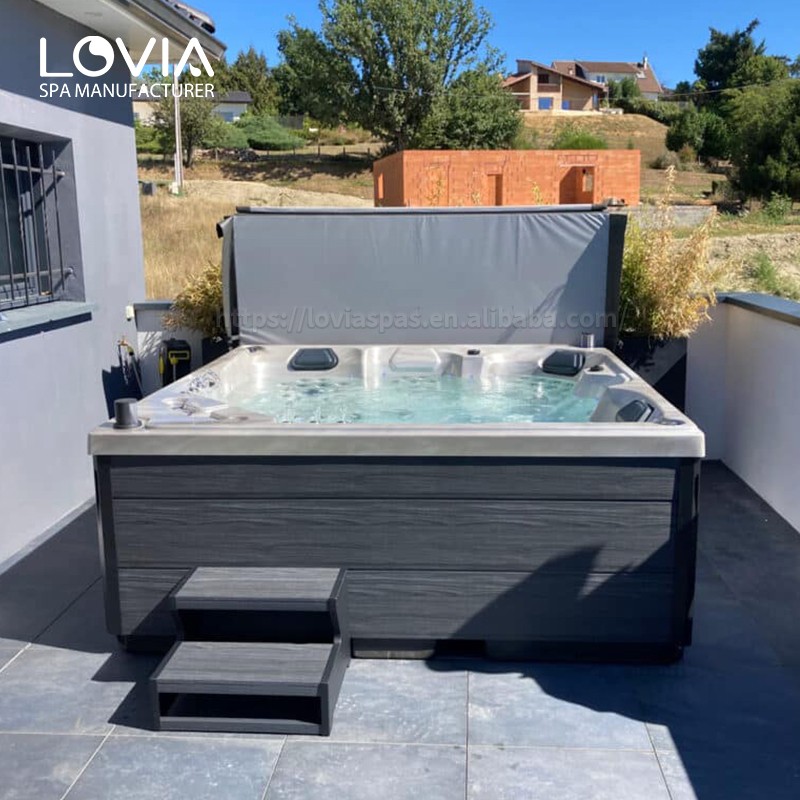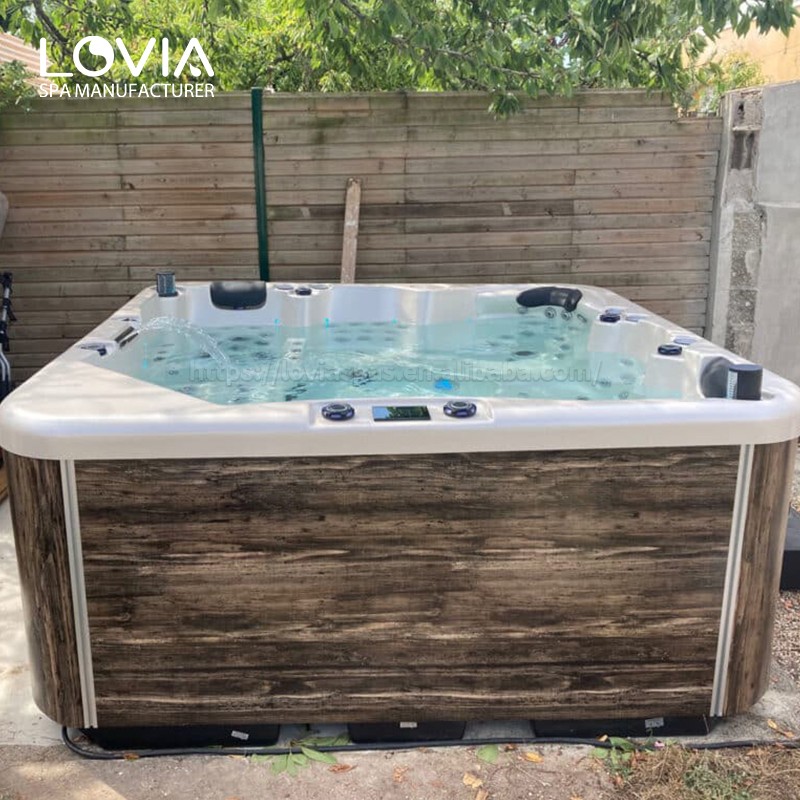
Does shocking an outdoor jacuzzi increase bromine levels?
2025-02-18 15:30Outdoor jacuzzi tubs provide many people with an ideal place to relax and unwind, using water massage and warm water therapy to relieve fatigue and improve blood circulation. However, in the daily maintenance of outdoor jacuzzi tubs, it is particularly important to keep the water clean and hygienic. To ensure that bacteria and algae do not grow in the water, many tubs use bromine or chlorine as disinfectants. However, sometimes users find that the bromine content in their outdoor jacuzzi tubs changes after "shocking".
So what does "shock" mean? How does it affect bromine levels? This article will delve into this issue and help you better understand the key factors in outdoor jacuzzi water quality management.

What is "shock" treatment?
"Shock" treatment, also known as water "shock" or "superchlorination", is to add a large amount of oxidant (such as chlorine or non-chlorine shock agent) to the tub to quickly increase the redox potential in the water to break down organic matter in the water and kill bacteria and algae. Shock treatment is often used to clean and restore water quality because daily use of outdoor hot tubs can cause sweat, skin care products, hair care products, urea and other impurities to accumulate in the water, which may react chemically with bromine or chlorine and reduce their disinfecting effectiveness.
The purpose of "shock" treatment is to quickly increase the concentration of oxidants, thereby accelerating the impurity decomposition process and restoring water clarity and cleanliness. Generally, shock treatment is performed once a week or after each use, depending on the use of the tub and the water quality.
What is the role of bromine in outdoor hot tubs?
To understand whether shock treatment increases bromine content, you first need to understand the role of bromine in outdoor hot tubs.
Disinfecting function of bromine
Bromine is a commonly used disinfectant, especially for outdoor hot tubs in high temperature environments. Compared with chlorine, bromine is more stable in hot water, less volatile, and its antibacterial effect is still effective when the pH value fluctuates greatly. Bromine can effectively kill bacteria, viruses and fungi, keeping the bathtub water clean.
How bromine works
Bromine disinfects by generating hypobromous acid (HBrO) and bromine amines (NH2Br). Hypobromous acid is the active form of bromine, which can quickly oxidize and kill microorganisms in the water. Bromineamines are byproducts of bromine reacting with organic pollutants in the water (such as sweat and urea). Although bromineamines are less active than hypobromous acid, they still have some disinfecting ability.
Bromine's regeneration characteristics
Unlike chlorine, bromine has the ability to "regenerate" during oxidation treatment. By adding an oxidizing agent (such as a shocking agent), bromineamines can be converted to hypobromous acid, thereby restoring its disinfecting effectiveness. This means that bromine is not "used up" after reacting with organic matter like chlorine, but can be used repeatedly.

What effect does shocking have on bromine levels?
Many outdoor hot tub users will find that bromine levels have increased after shocking, especially when non-chlorine shocking agents are used. There are several chemical mechanisms behind this phenomenon that need to be understood.
Conversion of bromineamines to hypobromous acid
When shocking, especially when using non-chlorine shocking agents (such as potassium persulfate), the shocking agent converts bromineamines back to hypobromous acid through oxidation. This process does not increase the actual bromine content in the water, but it does increase the concentration of active bromine. This makes it appear that the bromine level measured when the user tests the water has increased, because the proportion of hypobromous acid in the water that has a disinfecting effect has increased.
Shocking does not increase the total bromine content
Shocking itself does not actually introduce additional bromine into the water. The source of bromine is usually supplemented through special bromine tablets or bromine powder. The purpose of shocking is to activate the bromine that is already in the water, converting it from an inactive form (such as bromine amines) to an active form (hypobromous acid), thereby restoring its disinfecting effect.
Temporary fluctuations in bromine levels
You may measure an increase in bromine levels within a few hours after shocking. This is because the shocking agent causes the organic matter in the water to be rapidly oxidized, and the active form of bromine is restored at the same time. It is usually recommended to wait several hours after shocking before using the hot tub. This ensures that the chemical reaction in the water is complete, and also avoids excessive oxidant concentrations that may irritate the skin.
How to properly shock?
In order to ensure that the water quality of the outdoor hot tub remains clear and clean, it is important to shock it correctly. Here are some key steps and considerations:
Choosing the right shock agent
For bathtubs that use bromine as the primary disinfectant, it is usually recommended to use a non-chlorine shock agent (such as persulfate or potassium peroxide) to avoid the introduction of additional chlorine and better regenerate bromine. If a chlorine-containing shock agent is used, although it can also effectively kill bacteria, the mixture of chlorine and bromine may produce unwanted byproducts.
Dosage of shock agent
The amount of shock agent added should be adjusted according to the water volume and water quality of the bathtub. Excessive shock agent may cause excessive oxidant concentration, resulting in unnecessary waste and even irritation to the skin and eyes. Therefore, it is recommended to follow the dosage instructions provided by the manufacturer or conduct water quality testing once a week to ensure the balance of chemicals in the water.
Frequency of shock treatment
It is usually recommended to perform shock treatment once a week, especially in cases of high-frequency use. In addition, shock treatment should be performed immediately when turbid water, abnormal odor or chemical failure are found.
Waiting time after treatment
After completing the shock treatment, it is recommended to wait at least 2-4 hours to ensure that the shock agent has fully taken effect and the oxidant concentration in the water has returned to a safe range. This not only ensures the safety of the user, but also ensures the cleanliness of the water.
What are the risks of too much bromine?
Although shock treatment temporarily increases the activity of bromine, excessive bromine may have negative effects on users.
Skin and eye irritation
Bromine can irritate the skin and eyes at high concentrations. In particular, bromine amines, if present in high levels in the water, can cause dry, itchy skin, redness and discomfort in the eyes of bathtub users. Therefore, maintaining the right bromine concentration is key to ensuring a comfortable experience.
Respiratory problems
In closed or poorly ventilated environments, high concentrations of bromide may volatilize, causing throat irritation or respiratory problems after inhalation. This is less common in outdoor environments, but it should still be noted, especially when the water temperature is high.
Recommendations for maintaining a balanced bromine content
In order to maintain the appropriate bromine content after shock treatment, it is recommended that you test the water regularly and take the following measures:
Test the water regularly
Use a bromine test kit to test the water once a week to ensure that the bromine concentration remains within the recommended range (usually 2-4 ppm). Through testing, you can understand the bromine content in the water in real time to avoid it being too high or too low.
Control water temperature
High water temperature will accelerate the volatilization of bromine, so controlling the water temperature within a reasonable range (usually not exceeding 40°C) can reduce bromine consumption and maintain a stable bromine content.
Timely replenishment of bromine tablets
Bromine tablets or bromine powder are the main ways to replenish the bromine content in water. Regularly check and replenish bromine tablets in time to ensure that the bromine content in the water is always maintained within a safe and effective range.
Buy your outdoor wellness products directly from a trusted manufacturer. Guangzhou HuanTong Industrial has been producing high-quality spas, hot tubs, and swim spas for over 30 years. With our factory’s capacity to produce over 1200 units per month, we offer attractive wholesale prices and customized solutions for businesses. Whether you’re looking to buy in bulk or take advantage of our promotional discounts, we ensure competitive pricing and premium quality. Trust us for all your outdoor spa needs.

